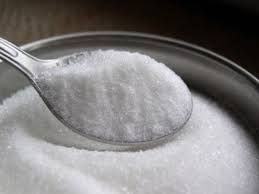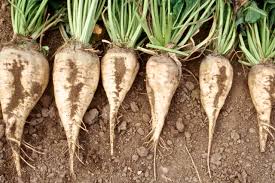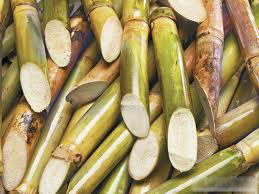
White Refined Cane Sugar Icumsa 45 is the best quality of Cane Sugars.
Sugar
Sugar is the generalized name for a class of chemically-related sweet-flavored substances, most of which are used in food. They are carbohydrates, composed of carbon, hydrogen and oxygen. Simple sugars are called monosaccharides and include glucose, fructose and galactose. The table or granulated sugar most customarily used as food is sucrose, a disaccharide. In the body, sucrose hydrolyses into fructose and glucose.
Sugars are found in the tissues of most plants, but are only present in sufficient concentrations for efficient extraction in sugarcane and sugar beet. Sugarcane is a giant grass and has been cultivated in tropical climates in the Far East since ancient times. Sugar beet is a root crop, is cultivated in cooler climates, and became a major source of sugar in the 19th century.
Sucrose is found in the stems of sugar cane and roots of sugar beet. A molecule of sucrose is formed by the combination of a molecule of glucose with a molecule of fructose. After being eaten, sucrose is split into its constituent parts during digestion by a number of enzymes known as sucrases. Glucose - dextrose or grape sugar - occurs naturally in fruits and plant juices and is the primary product of photosynthesis. Fructose - fruit sugar - occurs naturally in fruits, some root vegetables, cane sugar and honey and is the sweetest of the sugars.

Beets are grown in temperate areas. USA, Canada and EU are major producers of beet sugar.
Beet Sugar
Beet Sugar (Beta vulgaris) is a biennial plant in the Family Amaranthaceae, the tuberous root of which contains a high proportion of sucrose. It is cultivated in temperate regions with adequate rainfall and requires a fertile soil. The crop is harvested mechanically in the autumn and the crown of leaves and excess soil removed. The roots do not deteriorate rapidly and may be left in a clamp in the field for some weeks before being transported to the processing plant.
The crop is washed and sliced and the sugar extracted by diffusion. Milk of lime is added to the raw juice and carbonatated in a number of stages in order to purify it. Water is evaporated by boiling the syrup under a vacuum. The syrup is then cooled and seeded with sugar crystals. The white sugar which crystallizes out can be separated in a centrifuge and dried. It requires no further refining.

Canes are grown in sub-tropic areas. India, Thailand and Brazil are major producers of cane sugar.
Cane Sugar
Cane Sugar (Saccharum spp.) is a perennial grass in the family Poaceae. It is cultivated in tropical and sub-tropical regions for the sucrose that is found in its stems. It requires a frost-free climate with sufficient rainfall during the growing season to make full use of the plant's great growth potential. The crop is harvested mechanically or by hand, chopped into lengths and conveyed rapidly to the processing plant.
It is either milled and the juice extracted with water or the sugar is extracted by diffusion. The juice is then clarified with lime and heated to kill enzymes. The resulting thin syrup is concentrated in a series of evaporators after which further water is removed by evaporation in vacuum containers. The resulting supersaturated solution is seeded with sugar crystals and the sugar crystallizes out, is separated from the fluid and dried.
Molasses is a by-product of the process and the fiber from the stems, known as bagasse, is burned to provide energy for the sugar extraction process. The crystals of raw sugar have a sticky brown coating and can either be used as they are or can be bleached by sulphur dioxide or treated in a carbonatation process to produce a whiter product.
Statistics
The world produced about 168 million tonnes of sugar in 2011. The average person consumes about 24 kilograms of sugar each year (33.1 kg in industrialised countries), equivalent to over 260 food calories per person, per day.
| Country | 2007/08 | 2008/09 | 2009/10 | 2010/11 | 2011/12 |
|---|---|---|---|---|---|
| Brazil | 31 600 | 31 850 | 36 400 | 38 350 | 35 750 |
| India | 28 630 | 15 950 | 20 637 | 26 650 | 28 300 |
| EU | 15 614 | 14 014 | 16 687 | 15 090 | 16 740 |
| China | 15 898 | 13 317 | 11 429 | 11 199 | 11 840 |
| Thailand | 7 820 | 7 200 | 6 930 | 9 663 | 10 170 |
| USA | 7 396 | 6 833 | 7 224 | 7 110 | 7 153 |
| Mexico | 5 852 | 5 260 | 5 115 | 5 495 | 5 650 |
| Russia | 3 200 | 3 481 | 3 444 | 2 996 | 4 800 |
| Pakistan | 4 163 | 3 512 | 3 420 | 3 920 | 4 220 |
| Australia | 4 939 | 4 814 | 4 700 | 3 700 | 4 150 |
| Other | 38 424 | 37 913 | 37 701 | 37 264 | 39 474 |
| Total | 163 536 | 144 144 | 153 687 | 161 437 | 168 247 |
World sugar production in 1000 metric tons. Brazil is the largest producer of sugar in the world followed by India. Brazil exports more than 80% of the production. Brazil still has the potential of double the production as half of the canes are used for bio-ethanol, which is less profitable.

